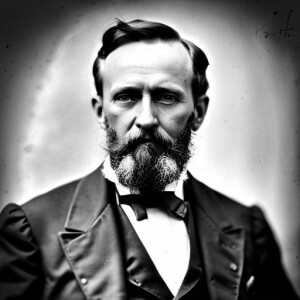Get ready to travel back in time to learn about one of America’s most influential leaders! Rutherford B. Hayes, the 19th President of the United States, was a man of many talents and accomplishments. Born on October 4, 1822, in Delaware, Ohio, Hayes was the fifth child of a farmer and a schoolteacher. He attended Kenyon College, where he honed his critical thinking skills, and graduated in 1842 before studying law at Harvard Law School, where he mastered the art of legal argumentation.
Hayes was a man of action, and his patriotism inspired him to fight for his country during the Civil War as a Union officer. He was wounded several times during the war but persevered and eventually rose to the rank of major general. After the war, Hayes transitioned to politics and was elected to Congress in 1864. He served three terms in Congress before being elected Governor of Ohio in 1867, where he continued to make an impact in the realm of politics.
As President, Hayes was a trailblazer for civil rights and reforming the civil service. He signed the Compromise of 1877, which effectively ended the era of Reconstruction and removed federal troops from the South. This compromise gave Hayes the presidency in exchange for the withdrawal of federal troops from the South. Hayes was an advocate for education and signed the bill that established the U.S. Naval Academy at Annapolis, Maryland. He also signed the bill that established the Smithsonian Institution, which is now one of the world’s largest museums and research centers.
After his presidency, Hayes devoted himself to philanthropy and education. He founded the Hayes Memorial Library and Museum in Fremont, Ohio, which is dedicated to the study of American history. Hayes died on January 17, 1893, at the age of 70, but his legacy lived on. He is remembered as a President who worked tirelessly to improve the country’s civil service and promote civil rights. He was also a philanthropist who dedicated his life to education and the study of history.

